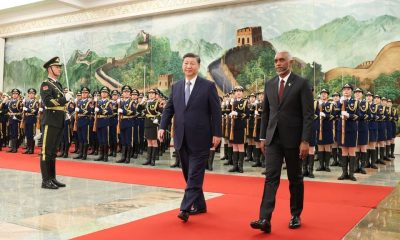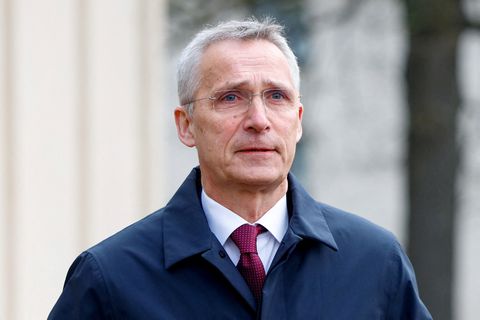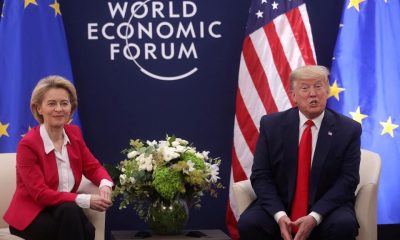ECONOMY
Fearful and grieving, Gen Z Americans clash over Israel conflict.
Kevin Khadavi, a Jewish student at Stanford University, received a call last week from his grandmother pleading to refrain from wearing his Star of David necklace around campus for fear that it could draw attention to himself. She later texted him, “Don’t make yourself obvious.”
A Muslim girl named Haniah at Washington University in St. Louis decided to wear earrings shaped like historic Palestine to show her support for Palestinians. She fought back tears as a classmate called her a terrorist for about three minutes after spotting them.
“If I cried, that would be a win for them,” she stated.
Young people in the U.S. have been seized by fear, fury, and sadness in the days after Hamas’ fatal strikes in Israel as they comprehend the bloodshed happening halfway across the world and experience its polarizing repercussions in their social circles.
Numerous Jewish, Palestinian, and other members of Generation Z (those born after 1996) who were interviewed expressed anger that complex viewpoints had been overshadowed. While many claim that social media has improved their comprehension of events, it has also worn them out and driven them away from friends.
According to polling, younger Americans are less trusting of Israeli policies toward the Palestinians than older Americans are. However, even among their group, there is a wide range of viewpoints, from those who see Hamas’ actions as a response to decades of Israeli oppression to those who accuse anyone participating in pro-Palestinian demonstrations of supporting terrorism to those who regret the fact that innocent civilians on both sides are caught in the crossfire of poor leadership.
Interviews revealed that they have had to decide whether and how to voice their opinions on a problem that has resisted peaceful resolution for many years, both in person and online.
DISPUTES ON THE CAMPUS
Wearing her earrings, according to Hannah, who requested anonymity due to safety concerns, felt like “the bare minimum” she could do to assist Palestinians living under siege in Gaza. At the same time, the Israeli government tries to eliminate the Hamas leadership. However, she questioned if it was currently safe to interact with pro-Israel classmates in light of the campus altercation,
“It’s a horrible situation on campus, honestly,” she stated.
In the meantime, many Jewish students have expressed concerns over the last week as they believe some of their peers are endorsing the Palestinian cause to back Hamas’ onslaught on Israelis.
According to Yonatan Manor, president of Boston University Students for Israel, failing to condemn Hamas is equivalent to backing the Nazis.
The 20-year-old asserted that this is the most antisemitic upsurge since the Holocaust.
Younger Americans are far less inclined to support Israel than older generations are. According to a Reuters/Ipsos poll conducted on Thursday and Friday, 58% of Americans aged 40 and up and 34% of Americans aged 18 to 39 feel Hamas is to blame for the violence.
Since 2014, when conflicts between Israel and Hamas resulted in hundreds of deaths, most of them Palestinians, support for Israel has increased across all Americans. However, it has decreased among younger people, who now support Israel, at a rate of just around 20%, down from 14% in 2014. The polling data indicated that older Americans now support Israel at a rate of about double that of younger Americans, at 56%, up from 28% in 2014.
Many Jewish students claim that the recent outpouring of sympathy for Palestinians seems like an assault on their right to exist. Others claim sympathy for the Palestinians but contend that the horror of Hamas’ strikes should supersede any discussion of the larger Israeli-Palestinian problem.
“Those conversations should happen – just not right now,” Manor said. “Now is a time for solidarity with Jewish people.”
However, other young people claimed that such thinking only reinforces a long-standing habit of neglecting Palestinians’ misery. Several students voiced dissatisfaction with Western institutions, ranging from the American government to their colleges, for unwaveringly supporting Israel.
A PhD candidate at the University of Chicago named Christopher Iacovetti outlined a “double standard,” noting that while pro-Israel activists are encouraged to condemn Hamas, they are seldom brought to account for Israel’s atrocities on Palestinians.
He compared the attack by Hamas to liberation movements like Nat Turner’s 1831 uprising, in which enslaved Black people massacred scores of white Virginians, and he claimed that oppressed people have a right to resist even when their actions are heinous in and of themselves.
“There’s a difference between war aims and war conduct,” he stated.
“WE ARE BOTH IN PAIN”
Campus demonstrations over the Middle East have been sparked, and it has also taken over students’ online lives. Most students surveyed used social media to share their thoughts and assess those of their classmates.
Many people mentioned feeling under pressure to publish anything online. However, they were also concerned that they would eventually offend someone and risk being ignored, humiliated in public, or drawn into a divisive political argument. Several people in the last week said that using social media was exhausting.
Students claimed that fruitful online debates had occasionally occurred. Muslim Washington University of St. Louis student Hadia Khatri claims she had an Instagram chat with a fellow student in her dorm who supported Israel and concluded that both sides required stronger leadership.
Some claim that social media pushed an oversimplification of a discourse that ought to be more nuanced, creating the impression that people are split.
Many said that the most radical voices were the loudest, which made fruitful discourse nearly impossible.
Some Jews who have been critical of Israel’s historical policy toward the Palestinians have found the temptation to join with one side especially completely unbearable.
Some people have publicly joined demands for Israel to lift its embargo as photographs of Palestinians dying in Gaza under Israeli siege have surfaced, sometimes facing backlash from family and friends.
Jewish Voice for Peace, a group that supports Palestinian independence, has participated in university protests to favor Palestine. One participant, a Middle Eastern Jewish Barnard College student who asked to remain anonymous due to safety concerns, said the organization’s ethos highlights the complexity of the struggle.
“It’s convenient to lean into the comfort of ‘sides’ and perfect labels at times like these, yet the reality is nuanced and uncertain,” she wrote in a message.
A Jewish student at George Washington University named Raffi Ivker expressed his opinion that neither side “has clean hands.” He said Israel’s recent tilt to the right has decreased the likelihood of peace and voiced worry that a ground invasion of Gaza would lead to more civilian fatalities.
However, he was also troubled to observe pro-Palestinian demonstrations after the assaults, and he claimed that the demonstrators seemed to be “glorifying or excusing” the killing of Israelis, which he described as revolting.
Josh Joffe, 23, a healthcare lobbyist in Washington, D.C., claimed to have gone through “cognitive dissonance” as a Jew who had been brought up to adore Israel but had now come to believe that Israel was mostly to blame for the conflict.
He has only confided in close friends about that viewpoint because he fears it would alienate others who are “really emotionally caught up in this right now.”
However, several students asserted that sharing those unfiltered emotions might help reduce conflict and foster understanding.
Last week, when Khadavi, a Stanford student, was leaving class, he collided with a Palestinian student. The two hugged each other and expressed concern for their families.
“Emotion absolutely plays a role in this – not as a blinding force but as an illuminating force, to try to bridge divides, to say that we both feel pain when people are killed,” he stated.
ECONOMY
U.S. strike kills militia leader blamed for Iraq attacks, – U.S. official
A U.S. strike kills a militia leader blamed for Iraq attacks, according to a U.S. official. According to a U.S. official who spoke to Reuters, the U.S. military killed a militia commander in a retaliatory strike on Thursday in Baghdad, which it claims is responsible for recent attacks on U.S. forces.
A drone fired at least two missiles into an al-Nujaba’a militia base in eastern Baghdad, according to witnesses and sources with the Iraqi police.
According to police and militia sources, the rockets killed four people, including a local group leader and one of his assistants. The rockets struck a car within the Nujaba’a headquarters. Health sources confirmed the death toll.
Since the Israel-Hamas battle started in October, the U.S. military has been attacked in Iraq and Syria at least 100 times, most often by a combination of missiles and uncrewed aerial vehicles.
900 US soldiers are stationed in neighboring Syria and 2,500 in Iraq to stop Islamic State extremists from rising again.
The military spokesperson for the prime minister stated, “The Iraqi armed forces hold the international coalition forces responsible for this unjustified attack on an Iraqi security entity.” He was alluding to Thursday’s strike.
The statement identified the paramilitary organization as an Iraqi force acting with Prime Minister Mohammed Shia al-Sudani’s authorization. According to the U.S. official, the strike was carried out to kill the militia commander when it struck the vehicle.
Videos of a burned-out car were posted on websites that supported the military. Reuters could not independently confirm the validity of the video.
Groups in Syria and Iraq that support Iran reject Israel’s Gaza campaign and blame the U.S. in part for it. A year ago, Prime Minister Al-Sudani required the assistance of some factions sponsored by Iran to obtain office; these factions now represent a significant bloc in his ruling coalition, over which he has limited influence.
According to Iraqi security officials, a government investigation is ongoing, and they stated they had no more information about who may have carried out the strike.
Commanders of the Iraqi militias declared they would respond against the United States for allegedly orchestrating the strike.
“We intend to strike back and cause the Americans to regret launching this aggression,” a local leader of the Iraqi militia, Abu Aqeel al-Moussawi, declared. The U.S. launched counterattacks in Iraq last month in response to a drone strike by insurgents affiliated with Iran that left one U.S. serviceman critically injured and two others wounded.
ECONOMY
Finland will sign a defense pact with the US.
On Monday, December 18, Finland and the United States will sign a defense cooperation agreement, according to a statement the Finnish government issued on Thursday. This deal would provide the United States military extensive access throughout the Nordic nation to the region of its long border with Russia through Finland.
This year, in reaction to Russia’s invasion of Ukraine in 2022, Finland, which is located in the Nordic region and is Russia’s neighbor, became the newest member of the North Atlantic Treaty Organization (NATO).
The fact that there will be no need to agree on everything individually makes it easier to organize activities during times of peace. However, Elina Valtonen, Finland’s Minister of Foreign Affairs, told the media that it might be even more crucial in times of crisis.
According to statements made by authorities before the announcement, the agreement with the United States is to facilitate the arrival of military assistance and assistance to Finland in the event of a conflict.
Under the terms of the deal, the United States military will have unrestricted access to fifteen different locations and regions in Finland, where it could also keep military vehicles, ammunition, and other supplies.
According to the deal, the regions would have four airbases, a military port, and railway access to northern Finland. In addition, the United States military will have a storage space adjacent to a railway that runs up to the Russian border.
Reuters reported in July that Finland is working to improve its railway infrastructure on its Swedish border. The goal of this improvement is to make it simpler for allies to send reinforcements and equipment from across the Atlantic to Kemijarvi, which is located an hour’s drive from the Russian border and seven hours from Russia’s nuclear bastion and military bases near Murmansk in the Kola peninsula.
Last week, Sweden inked a similar arrangement with the United States, which granted it access to 17 places, including four air bases, one harbor, and five military camps. Sweden has also requested membership in NATO, but it has been left waiting owing to reluctance from current members Turkey and Hungary.
The United States of America has signed similar agreements with several other NATO countries, including Norway, Bulgaria, Latvia, Lithuania, Poland, Slovakia, the Czech Republic, Hungary, and Estonia. The deal with Denmark is now awaiting ratification.
Government authorities have said that Finland would not permit the storage or transportation of nuclear and biological weapons, as well as anti-personnel mines, on its territory. This decision is based on the international non-proliferation treaties that Finland has already agreed to.
According to them, there are no plans to establish permanent bases in Finland, but the United States military can maintain a permanent presence and conduct regular exercises there.
Monday will be the day the deal is signed in Washington, District of Columbia, before legislators in both nations.
ECONOMY
Nations strike a deal at COP28 to transition away from fossil fuels.
At the COP28 climate conference, which took place on Wednesday, representatives from almost 200 nations reached an agreement to begin lowering the global use of fossil fuels to prevent the most severe effects of climate change. This agreement was reached, which signals the ultimate end of the oil era.
After two weeks of intense discussions, the agreement reached in Dubai was intended to send a strong message to investors and policymakers that the globe is unified in its goal to break with fossil fuels. According to scientists, this is the last best option to prevent a global disaster from occurring.
The accord was described as “historic” by the President of COP28, Sultan al-Jaber, but he stressed that the deal’s success will be determined by how well it is implemented.
He told the full plenary at the summit, “We are what we do, not what we say,” adding that we are what we do. “We must take the steps necessary to turn this agreement into tangible action.”
Several nations praised the pact since it successfully achieved something outside the scope of climate discussions for decades.
In a statement, Norway’s Minister of Foreign Affairs, Espen Barth Eide, stated, “It is the first time that the world unites around such a clear text on the necessity of transitioning away from fossil fuels.”
Over one hundred nations exerted great effort to include strong wording in the COP28 agreement that would “phase out” the use of oil, gas, and coal. The oil producer organization OPEC, which Saudi Arabia chairs, vehemently opposed them. OPEC stated that the world can reduce emissions without avoiding certain fuels.
Some observers were concerned that the discussions might come to a standstill due to this conflict, which caused the summit to run into overtime for a whole day on Wednesday.
The countries’ governments that are members of the Organization of the Petroleum Exporting Countries primarily depend on the money generated from the oil industry. These countries hold almost 80 percent of the world’s proven oil reserves and around one-third of the world’s oil production.
On the other hand, small climate-vulnerable island states were among the most outspoken advocates of phasing out fossil fuels. They had the support of major oil and gas producers such as the United States of America, Canada, and Norway, as well as the European Union and many other governments.
“This is a moment where multilateralism has actually come together and people have taken individual interests and attempted to define the common good,” said John Kerry, the United States climate envoy, after the agreement was approved.
As the principal negotiator for the Alliance of Small Island States, Anne Rasmussen expressed her disapproval of the accord, stating that it lacked ambition.
“We have made an incremental advancement over business as usual, when what we really need is an exponential step change in our actions,” stated the spokesperson.
However, she did not give a formal objection to the agreement, and the audience responded to her remarks with a standing ovation that lasted for about two minutes.
Dan Jorgensen, the Danish Minister for Climate and Energy, expressed his astonishment at the circumstances surrounding the pact, stating, “We are standing here in an oil country, surrounded by oil countries, and we made the decision saying let’s move away from oil and gas.”
The proposed agreement aims to ” transition away from fossil fuels in energy systems in a just, orderly, and equitable manner… to achieve net zero by 2050 in keeping with the science.”
This terminology, to a certain degree, depicts what has already started to take place, with an increasing number of countries establishing laws in recent years to transition to a more environmentally friendly economy.
Europe and the United States have phased out their fleets of coal-fired power plants; the installation of renewable power capacity throughout the globe has reached record levels; and several nations have enacted measures to support the commercialization of electric cars.
The agreement requires countries to speed up this process, notably by tripling the capacity of renewable energy producers throughout the world by the year 2030, boosting efforts to limit the amount of coal used, and speeding up the development of technology such as carbon capture and storage that help clean up industries that are difficult to decarbonize.
The deal was described as “a menu where every country can follow its own pathway,” according to a source familiar with Saudi Arabia’s position. The source also stated that the deal “shows the various tracks that will allow us to maintain the objective of 1.5 (degrees Celsius) in accordance with the characteristics of every nation and in the context of sustainable development.”
Several other oil-producing nations, notably the United Arab Emirates, which hosted the conference, had campaigned to include carbon capture in the agreement. It is possible to exploit the technology to justify continuing to drill, according to critics, who claim that it is still costly and has not been demonstrated to work at scale.
In addition, former Vice President Al Gore expressed his approval of the accord. However, he also stated: “The influence of petrostates is still evident in the half measures and loopholes included in the final agreement.”
Now that the agreement has been reached, the nations must deliver through their national policies and investments.
The nation of China, which is now the largest carbon polluter in the world, has proposed that industrialized nations should take the initiative.
According to Zhao Yingmin, the vice environment minister of the nation, “Developed countries have unshirkable historical responsibilities for climate change.” This statement was made after the treaty was adopted.
Climate-conscious governments in the United States, the world’s leading producer of oil and gas and the most significant historical emitter of greenhouse gases, have had difficulty passing laws that align with their climate commitments through a split Congress.
Last year, Vice President Joe Biden of the United States of America achieved a significant win by securing the approval of the Inflation Reduction Act, which included subsidies for renewable energy that totaled hundreds of billions of dollars.
Over the past several years, there has been growing public support for renewable energy and electric cars from Brussels to Beijing. This support, together with advancements in technology, falling prices, and more private investment, has also contributed to the fast rise of applications for these technologies.
Despite this, oil, gas, and coal are responsible for around 80 percent of the world’s energy supply, and there is a broad range of forecasts regarding when the global demand will ultimately reach its peak.
Rachel Cleetus, the policy director of the Union of Concerned Scientists, expressed her admiration for the climate pact; nevertheless, she stated that it does not commit wealthy nations to provide more funding to assist developing nations in paying for the transition away from fossil fuels.
“The finance and equity provisions… are seriously insufficient and must be improved in the time ahead in order to ensure low- and middle-income countries can transition to clean energy and close the energy poverty gap,” said the representative.
-

 Europe7 months ago
Europe7 months agoRussia’s Shoigu accuses the West of seeking to expand the Ukraine war to the Asia-Pacific.
-
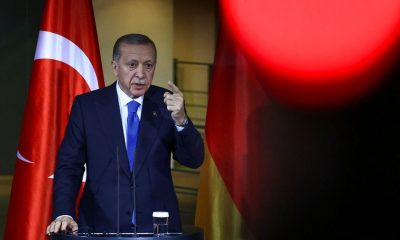
 Geopolitics & Foreign Policy6 months ago
Geopolitics & Foreign Policy6 months agoTurkey’s Erdogan says he may visit Egypt soon, discuss Gaza patients -media.
-
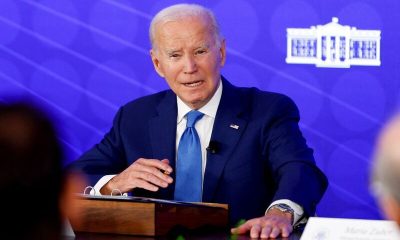
 America8 months ago
America8 months agoRepublican US House to hold first Biden impeachment inquiry hearing
-

 Geopolitics & Foreign Policy6 months ago
Geopolitics & Foreign Policy6 months agoRussia deploys new nuclear missile in Kaluga region – RIA
-

 Geopolitics & Foreign Policy6 months ago
Geopolitics & Foreign Policy6 months agoCeasefire takes hold in Gaza ahead of hostage release; aid enters enclave.
-

 Gender, Sexuality & Identity7 months ago
Gender, Sexuality & Identity7 months agoGreenland women ask Denmark for compensation over involuntary birth control.
-
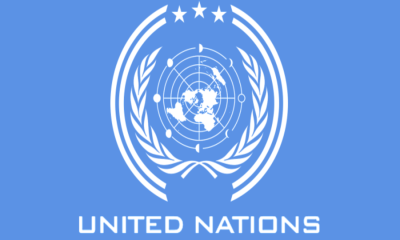
 Global Issues & Cooperation8 months ago
Global Issues & Cooperation8 months agoHuman rights in Russia have ‘significantly deteriorated’ – UN expert.
-

 TECH6 months ago
TECH6 months agoAustralia to amend laws to regulate digital payments like Apple and Google Pay.




